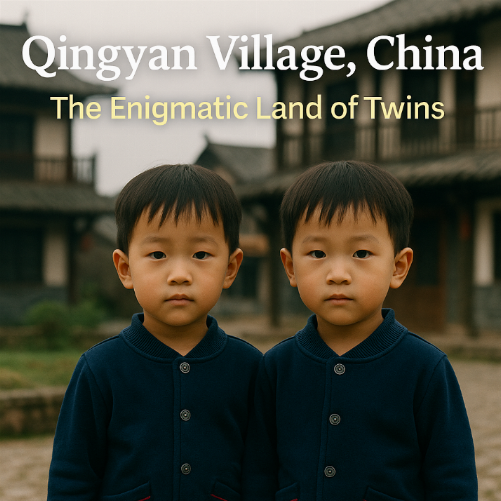Imagine walking through a village where nearly every street has a pair of twins. In Qingyan Village, China, this is a reality. With 39 sets of twins among just 367 households, this small community has baffled scientists and intrigued visitors alike.
1. Context or Origin
Qingyan Village is located in the Jiangjin District of Chongqing, southwest China. Despite its modest size, the village boasts an extraordinary number of twin births. The oldest twins are 89 years old, while the youngest are just a few months old .
2. Development of the Phenomenon
Several theories have been proposed to explain the high incidence of twins in Qingyan Village:
-
Genetic Factors: Some researchers suggest that a genetic predisposition among the local population may contribute to the phenomenon.
-
Dietary Influences: Others speculate that the local diet, possibly rich in certain nutrients, could play a role.
-
Environmental Factors: There are also beliefs that elements like the village's water supply might influence twin births.
However, none of these theories have been conclusively proven, leaving the mystery unsolved.
3. Curiosities or Implications
-
Cultural Significance: In Chinese culture, twins are often seen as a symbol of good fortune and prosperity.
-
Tourism Potential: The village's unique characteristic has the potential to attract tourists interested in its peculiar demographic.
-
Scientific Interest: Qingyan Village continues to be a subject of study for scientists aiming to understand the factors contributing to high twin birth rates.
4. Conclusion or Moral
Qingyan Village stands as a testament to the mysteries that still exist in our world. Whether due to genetics, environment, or other unknown factors, the village's high twin birth rate remains an enigma, inviting further exploration and study.
